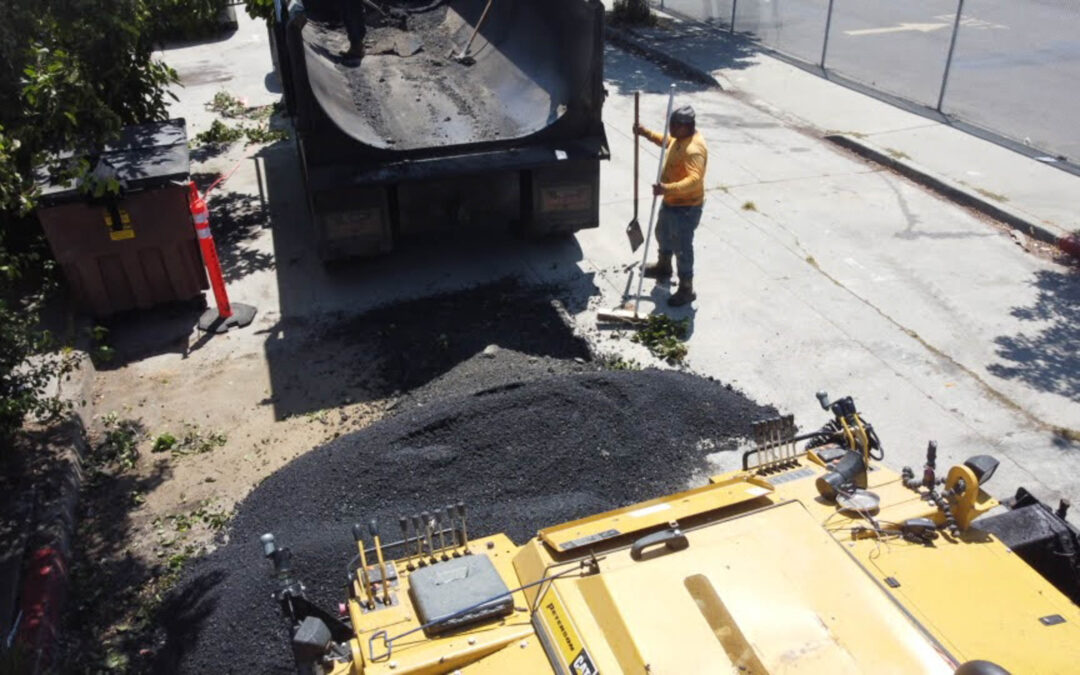The high temperature of asphalt when poured serves several important purposes:
1. Workability
Heating the asphalt to high temperatures makes it pliable and easier to work with. At these temperatures, the bitumen becomes fluid, allowing the mixture to be spread evenly over the surface. This is essential for achieving a smooth, even surface that can be compacted effectively.
2. Adhesion
The heat helps the asphalt bond with the underlying surface, whether it’s a layer of existing pavement, a gravel base, or concrete. This strong adhesion is crucial for the longevity and durability of the paved surface.
3. Compaction
Proper compaction is key to the performance of asphalt surfaces. When asphalt is poured at high temperatures, it remains soft enough to be compacted thoroughly, eliminating air voids and creating a dense, durable surface.
4. Long-Term Durability
Pouring asphalt at the correct temperature ensures that it will solidify correctly as it cools. This solidification process is critical for the pavement’s long-term durability, as it helps prevent issues like cracking, rutting, and other forms of deterioration.
Safety Precautions During Asphalt Installation
Working with asphalt at such high temperatures requires careful safety precautions to protect workers and ensure a successful installation:
1. Personal Protective Equipment (PPE)
Workers handling hot asphalt wear protective clothing, including heat-resistant gloves, long sleeves, pants, and boots, to prevent burns. Safety goggles and face shields are also used to protect against splashes and fumes.
2. Proper Training
Workers receive training on handling hot materials, recognizing heat-related hazards, and responding to emergencies. This training is essential to prevent accidents and ensure a safe working environment.
3. Ventilation and Fume Control
Asphalt emits fumes when heated, which can be harmful if inhaled. Proper ventilation and fume control measures are implemented to minimize exposure. In some cases, respiratory protection may also be used.
4. Controlled Pouring and Spreading
Pouring and spreading asphalt is done with precision to avoid splashes and spills. Equipment operators are trained to control the flow of hot asphalt, reducing the risk of burns and other injuries.
5. Monitoring Weather Conditions
Weather conditions, such as extreme heat or cold, can impact the safety and effectiveness of asphalt installation. Crews monitor the weather and adjust their procedures accordingly to maintain safety and ensure the asphalt is poured and compacted at the optimal temperature.
Conclusion
Asphalt is poured at temperatures ranging from 275°F to 300°F (135°C to 150°C) for Hot Mix Asphalt, and slightly lower for Warm Mix Asphalt. These high temperatures are essential for ensuring the asphalt’s workability, adhesion, compaction, and long-term durability. While working with hot asphalt presents certain risks, stringent safety measures and proper training help protect workers and ensure a successful installation.

